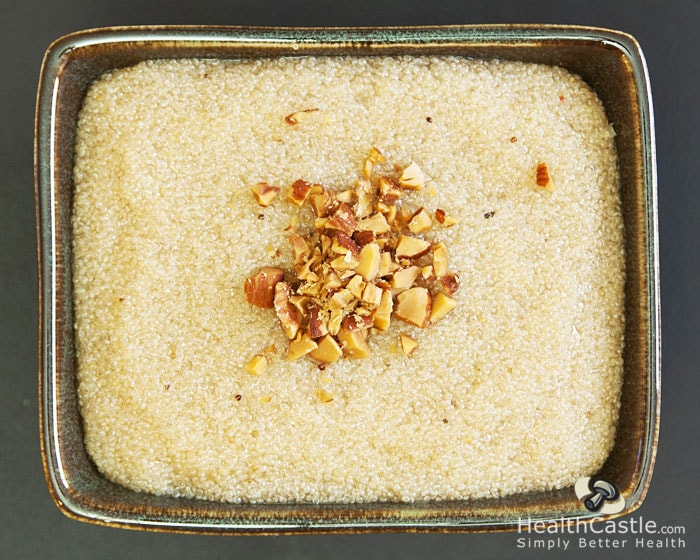
Written By: Sofia Layarda, MPH
Title: Master of Public Health
Alumni: University of California, Berkeley
Last Updated on:


In celebration of Heart Health month, we show you how to prepare a porridge alternative for hot breakfast, whether you’re tired of eating oatmeal every morning, or just want a gluten-free alternative. Probably a lesser-known whole grain than quinoa or millet, amaranth is a gluten-free crop that dates back thousands of years to the time of the Incas. It is related to spinach and beets. Both the tiny seeds and leaves are edible and are consumed in many parts of the world. Besides being high in fiber, amaranth seeds are unusually high in protein.
Table of Contents
Starting Amount: 1/2 cup raw

Pre-Soaking Requirement: No
Pre-Rinsing Requirement: No
Cooking Liquid: 1.25 water (or broth for savory dishes)
Cooking Time: Combine seeds and water in a pot and bring to a boil. Once the water starts to boil, reduce heat and simmer for 20 minutes, covered. (To yield a fluffier texture in the cooked amaranth, reduce the amount of liquid to a 2:1 ratio. In other words, use 1 cup of liquid for every 1/2 cup raw amaranth.)
Resulting Yield: 1.5 cups

Alumni: University of California, Berkeley – Sofia believes in bringing back fun and pleasure into everyday eating. She loves cooking, and is constantly experimenting with ingredients, creating recipes and trying them out on family and friends. Her latest interest lies in finding realistic and practical ways of environmentally-friendly food/eating habits.
amaranth, gluten free, home cooking, how to cook, vegetarian, whole grains